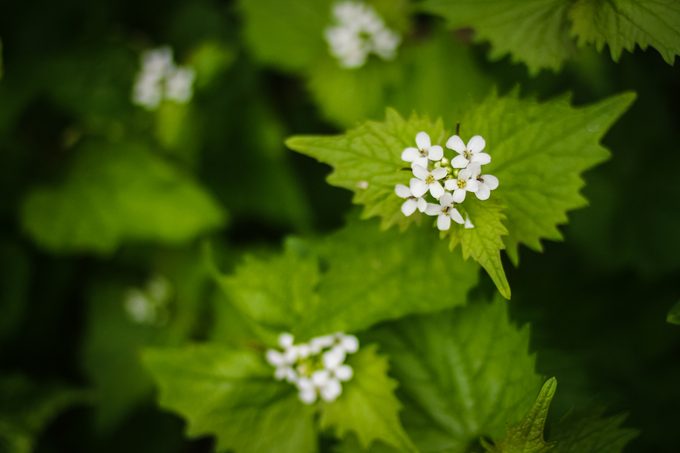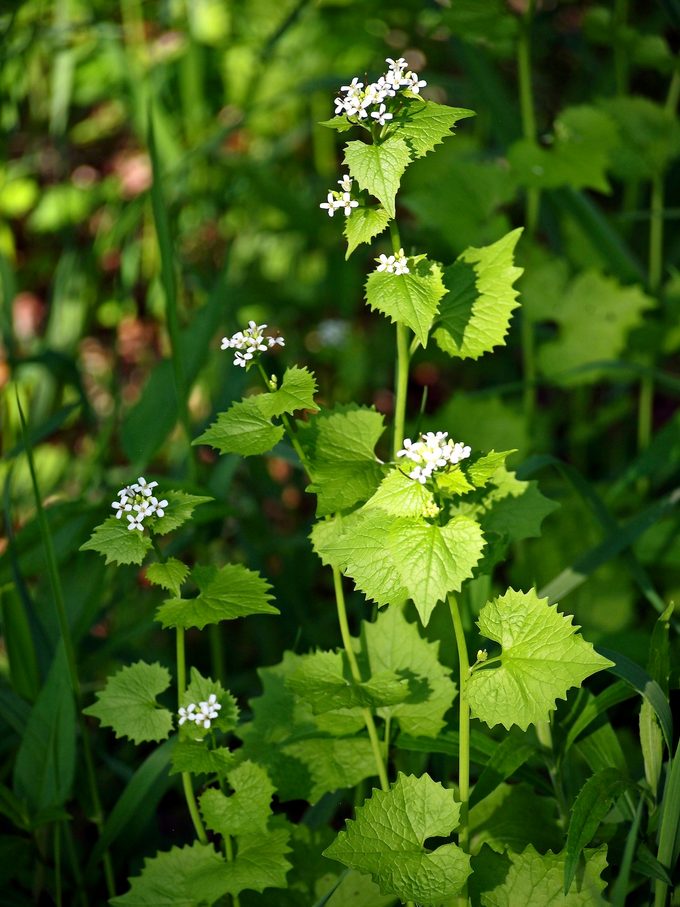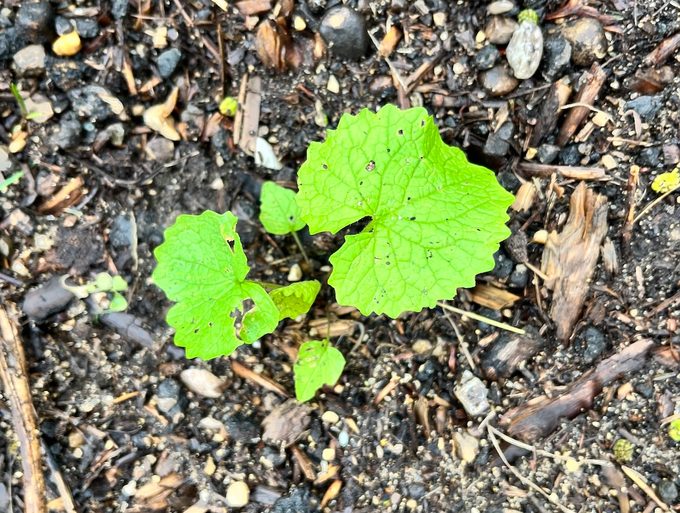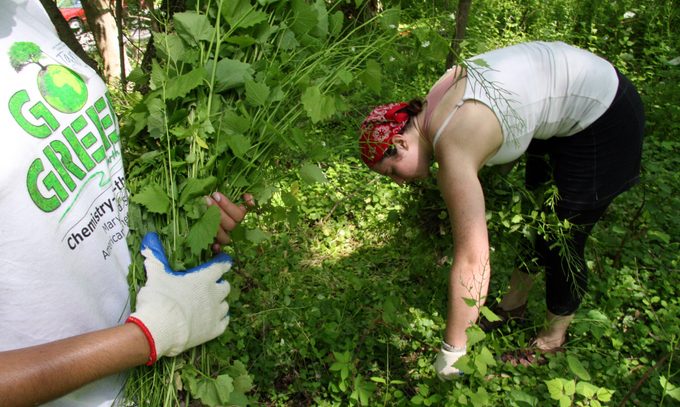Garlic mustard is a pungent, invasive headache for gardeners across America. Here's why you should get rid of this noxious weed.

Garlic Mustard: A Noxious Invasive Weed

Any gardener knows the job of weeding’s never really done. There’s always something growing where it shouldn’t. If you’re lucky, it’s only one something, and it’s not a something that spreads. Unfortunately, if you’re dealing with garlic mustard (Alliaria petiolata), you might be yanking it out of the ground for several gardening seasons. And you’ll have to stay vigilant to remove all of it. Here’s why you should get garlic mustard out of your yard, and how to get the job done right.
On This Page
What Is Garlic Mustard?

Garlic mustard is a particularly irksome invasive plant that’s set down roots in the northeastern, midwestern and northwestern United States. Originally from Europe and Asia and part of the mustard family, this plant found its way to North America in the mid-1800s. Because of how quickly it spreads and the chemicals in its roots, it poses a problem for our native wildflowers.
Garlic Mustard Identification

Identification is relatively easy — it’s even possible to use your nose. Leaves emit a distinct garlicky smell when crushed. Other easy ways to I.D. include looking for 2- to 4-feet-tall plants with toothy leaves. Check, too, for a cluster of four-petaled flowers growing out at the top. Those flowers appear in spring.
Important to note is that garlic mustard is biennial. First-year plants won’t have flowers; look for a small rosette of rounded kidney-shaped leaves low to the ground. Second-year plants, however, grow taller and boast the typical white blooms.
You won’t normally find just one garlic mustard plant, either. Where there’s one, there’s typically many of these weeds growing; one plant can produce hundreds or thousands of seeds.
Check your yard for these common invasive flowers.
How to Get Rid of Garlic Mustard

Thankfully, eradicating this invasive plant isn’t too difficult: it just takes work and persistence. The best way to get rid of it is to hand pull the plants after a rainfall (when it’s easier to get the full root), and before the plants set seed. Wear gloves because the sap may irritate your skin.
Make sure to bag up the plants and throw them away. Do not compost them.
The best time to pull up garlic mustard is in early spring. If you try to pull it up in fall, you’ll have seedpods to contend with, and seeds can remain viable in soil for up to seven years. Large infestations might need to be burned or treated by a professional landscaper.
RELATED:
- Irritating and Poisonous Plants You Should Avoid
- How to Get Rid of Thistle Plants in Your Yard
- 12 Tips to Keep Weeds out of the Garden
Sources
- The Nature Conservancy, “Garlic Mustard: Invasive, Destructive, Edible“
- Wisconsin Department of Natural Resources, “Garlic Mustard“




















